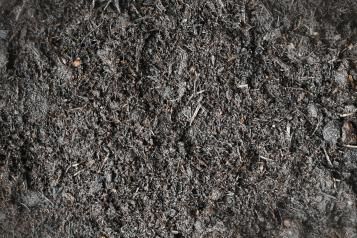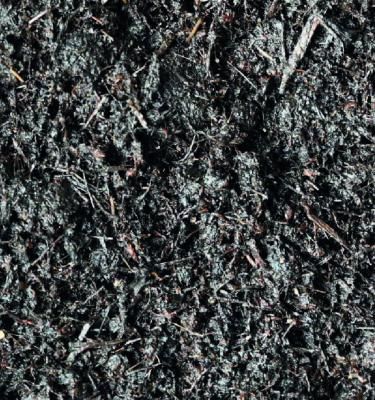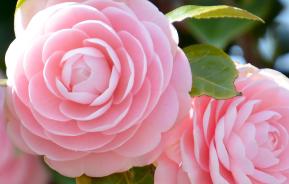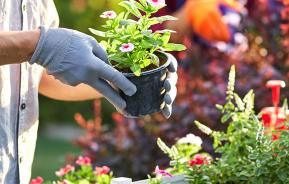Many gardening guides indicate that a particular plant prefers acidic, alkaline or neutral soil. In fact, having the right soil conditions is so important to some plants that it can be make or break. However, if the required acidity is not present naturally, there are lots of things we can do to create them.
What is acidic soil?
Soil acidity or alkalinity is measured on the pH scale. The pH scale runs from 0 to 14:
- A pH of 4.9 or below indicates very acidic soil.
- A pH range of 5.0 - 5.9 indicates acidic soil.
- A pH range of 6.0 - 6.9 indicates moderately acidic soil.
- A pH of 7.0 is neutral.
- A pH range of 7.1 - 8.0 indicates moderately alkaline soil.
- A pH range of 8.1 - 9.0 indicates alkaline soil.
- A pH of 9.1 or above indicates very alkaline soil.
The UK has an interesting geological history which has provided the country with a mix of soil types. Few areas have alkaline soil, but these are found where chalk or limestone is the underlying rock type, such as the North and South Downs. It is difficult to grow acid-loving plants in the ground in these places.
Most UK gardens have soil which is neutral to moderately acidic. Although most plants will grow in that soil, the optimum range for acid-loving plants is 5.1 - 6 on the pH scale. Plants that are suited to acidic soils are referred to as ‘ericaceous’ and sometimes as ‘calcifuges’.
It is useful to know the pH level of your garden soil so that plants naturally suited to the soil type can be selected, and so that we can understand how to try to change it.

Which plants prefer acidic soil?
Many plants will tolerate a degree of acidity, but there are some which will positively thrive in a garden with ericaceous soil:
- Bleeding heart (Lamprocapnos spectabilis)
- Blueberries (Cyanococcus)
- California lilac (Ceanothus)
- Camellia spp.
- Flowering dogwood (Cornus florida)
- Gardenia spp.
- Heathers (Ericaceae spp.)
- Holly (Ilex aquifolium)
- Hydrangea spp.
- Lily of the valley (Pieris japonica)
- Lilyturf (Liriope muscari)
- Magnolia spp.
- Oats (Avena sativa)
- Pine (Pinus spp.)
- Rhododendron spp. (including Azaleas)
- Spruce (Picea)
- Trillium spp.
- Welsh poppy (Meconopsis)
- Witch hazel (Hamamelis)
- Wood anemone (Anemonoides nemorosa)
Plants which need acidic conditions but do not have access to them can present with odd symptoms. Stunted or gnarled foliar growth, poor flowering, yellowing between leaf veins, and browning along the leaf margins, can indicate a soil problem in ericaceous plants. This is because the plant cannot access essential nourishment needed from the soil, causing a deficiency in essential nutrients.
Plants which do not like acidic soil, and which are grown in it, can be exposed to particular levels of minerals which are harmful to them. This includes aluminium, hydrogen, and manganese. It can mean the plant is unable to take up essential nutrients, such as calcium and magnesium. This can be very damaging to alkaline loving plants such as lilac and lavender.
How to test your soil acidity
If you aren’t sure how acidic your soil is, there are several ways to check. You can get a good idea by looking at the plants already present. For example, healthy rhododendrons, heathers and camellias suggest that the soil is acidic.
Another rudimentary way to check is to make a homemade testing kit. You will need:
- Trowel
- Bucket
- Two glass jars with lids
- 250ml water which has been allowed to stand for 24 hours
- 125ml white wine vinegar
- 125g baking soda
To test the soil with the homemade kit:
- Use the trowel to take samples of soil from around the garden, and add to the bucket.
- Mix the contents of the bucket well, and quarter-fill each of the glass jars.
- Add 125ml of water to each jar. Add the lids to each and shake to mix well with the soil.
- Place both jars on a flat surface and remove the lids.
- Add all of the vinegar to one of the jars. Any fizzing or bubbling indicates that the soil is tending towards alkalinity. This is because the (acidic) vinegar is reacting with traces of alkaline substances in the soil.
- Add the baking soda to the other jar. Any fizzing or bubbling indicates that the soil is tending towards acidity. This is because the (alkaline) baking soda is reacting with traces of acidic substances in the soil.
A more exacting way to check soil pH levels is to buy a testing kit from a garden centre or online. Alternatively, there are professional services which can be used to test the acidity of your soil. They are able to analyse a sample of your garden soil in laboratory conditions, providing an accurate indication of the type of soil present. Of course, this costs more money than a homemade or shop-bought test kit, but some services will also provide other useful information about the soil, such as soil texture (e.g. clay, sand), and the presence of organic matter.
Once the results are in, it’s time to embark on a treatment plan.

Making your soil more acidic
Efforts to increase the acidity of your soil can be undertaken all year round. It can take a long time to change soil pH, depending on the size of the garden and the current acidity levels.
As is good practice for all garden borders, mulch with organic matter annually. Any ericaceous compost, wood-chip, leaf-mould or well-rotted manure will help with this, naturally lowering the pH of your soil over time. If you have access to pine needles, oak leaves, or coffee granules, prioritise spreading them around ericaceous plants, as they will provide a quick boost of acidity.
Another great value way to lower the pH of soil is to make a compost tea. Add handfuls of well-rotted compost to a bucket of water, stir every two days for a week, then pass through a garden sieve. Return the material parts to the soil surface as a mulch, and use the remaining water to water the acid-loving plants.
There are a number of chemicals which can be applied to the garden from spring to autumn to increase soil acidity:
- Iron sulphate (also known as ferrous sulphate, and sulphate of iron)
- Aluminium sulphate
Always wear protective clothing to cover all skin when using chemicals in the garden. Gloves to protect hands, and a face mask covering the eyes, nose and mouth are essential.
Tap water in the UK is usually slightly alkaline, so if using it, allow it to sit in the sun for a day or so until the chlorine dissipates. Even better, install a waterbutt to outside buildings to collect rain water, which is naturally more acidic than treated mains water.
Some soils are so alkaline that changing them to become acidic is nearly impossible. If this is the case with your garden, it might be better to rethink planting ericaceous plants directly in the soil. Grow in containers instead, where it is easier to manage soil acidity by using an ericaceous compost.
After a year of treatment, recheck your soil pH to check that acidity levels are in the range desired. A pH test should confirm that your soil has a pH level of 7 or below, and ideally as low as 5.5.








